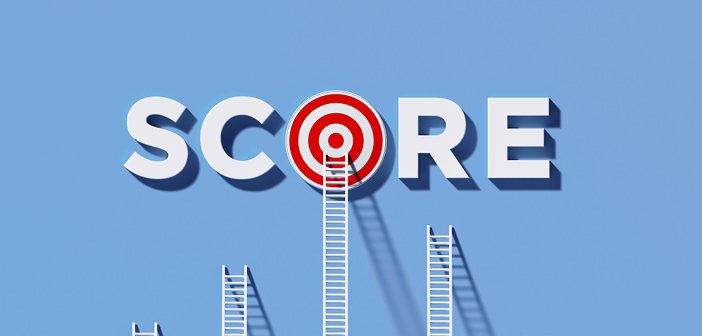The five Cs of credit is a system used by lenders to gauge the creditworthiness of potential borrowers. The system weighs five characteristics of the borrower and conditions of the loan, attempting to estimate the chance of default and, consequently, the risk of a financial loss for the lender.
The lender takes into account the applicant’s character, capacity to repay a loan, capital on hand, collateral, and economic and other conditions associated with the loan.
This article―with inputs courtesy of Forbes and Investopia―reviews the components of the 5Cs of credit and how to manage them. This will help you better understand how you are evaluated for a loan, and potentially take action to address issues beforehand. Remember―first impressions count. So the more you stack the odds in your favor before applying, the better your chances of developing a good relationship with the lender.
1. Character. Although it’s called character, the first C more specifically relates to credit history: a borrower’s reputation or track record for repaying debts. This information is found on the borrower’s credit reports. Generated by the three major credit bureaus—Experian, TransUnion, and Equifax—credit reports contain detailed information about how much an applicant has borrowed in the past and whether they have repaid loans on time. These reports also contain information on collection accounts and bankruptcies, and they retain most information for seven to 10 years. Given the critical part a good credit score and credit reports play in securing a loan, it’s worth considering a good credit monitoring service. Your Credit Union’s free Credit Sense platform can help you keep track of your Credit and correct costly reporting errors.
2. Capacity Capacity summarizes a borrower’s ability to repay a loan based on the applicant’s available cash flow. When considering this, lenders take into account whether the borrower can safely make payments on the new loan in addition to any existing debts. Relevant factors include the borrower’s income and how stable this is.
3. Capital Lenders also consider capital the borrower can put towards a potential investment. A large contribution by the borrower decreases the chance of default. Borrowers who can make a down payment on a home, for example, typically find it easier to receive a mortgage. Down payments indicate the borrower’s level of seriousness, which can make lenders more comfortable extending credit.
4. Conditions The conditions of the loan, such as its interest rate and amount of principal, influence the lender’s desire to finance the borrower. Conditions can refer to how a borrower intends to use the money. Consider a borrower who applies for a car loan or a home improvement loan. A lender may be more likely to approve those loans because of their specific purpose, rather than a signature loan, which could be used for anything. Additionally, lenders may consider conditions that are outside of the borrower’s control, such as the state of the economy, industry trends, or pending legislative changes.
5. Collateral Collateral is a valuable asset a borrower pledges against the loan, to help secure the lender’s interests in making the loan. For example, if the borrower defaults on the loan, the lender can repossess or otherwise seize the asset to recoup the unpaid amount. A borrower’s ability—and willingness—to pledge valuable collateral reduces the risk to the lender and may improve the likelihood of getting the loan and of getting it on better terms.
For example, when taking out a mortgage, the real estate serves as the collateral; with an auto loan, the collateral is the car. These are the most common types of collateral that lenders accept:
• Real estate
• Cars
• Cash or checking and savings account balances
• Certificates of deposit and other investments
• Business equipment and inventory
• Accounts receivable/unpaid invoices
Is there a 6th ‘C’ of credit?
Sometimes people refer to the credit report as the sixth C of credit. Your Credit Union can provide you with regular, free credit reports, both as part of monthly statements and via our “all things credit” platform, Credit Sense.
How to Improve on Each of the 5 C’s of Credit
Understanding the five C’s of credit can help you qualify for a loan, but you may need to spend time improving one or more elements. Here’s how you can improve your overall financial situation and bolster your creditworthiness by addressing the five C’s:
• Increase your savings. Building up your savings can improve how your assets look on paper and reassure a lender that you can repay a loan. Depending on your savings goals, this strategy can also increase how much capital you have for a down payment.
• Make consistent, on-time bill payments. Payment history typically accounts for some 35% of a consumer’s credit score—the largest of any other category. On-time monthly payments can improve your credit score over time and demonstrate your good character to lenders. To ensure your payments go out on time, consider setting up automatic payments which are taken directly form your bank account on a pre-arranged schedule.
• Pay off debts early. The amount a borrower owes makes up some 30% of their credit score. This means that making extra payments or paying off debts early may improve your credit score. By doing so, you also improve your capacity to repay the loan, thereby reducing the risk you pose to a lender.
• Wait to open other new accounts or credit cards. Borrowers who open multiple credit accounts in a short period of time may be considered riskier than borrowers who do not. So, while it only accounts for some 10% of a credit score calculation, any amount of new credit you take out can speak to your borrower character as well as your capacity to cover debt service.
• Request a credit limit increase. A credit utilization rate is the ratio of how much a borrower owes on revolving lines of credit to the overall credit limit. A ratio greater than 0% but below 30% is typically considered good. To improve your ratio, consider requesting a credit limit increase—just don’t take advantage of your new credit to make large purchases close to the new limit, as that will drive up your ratio and may depress your credit score.
Working with a Credit Union as opposed to a “big bank” can also confer advantages. While a large bank will typically use an algorithm to vet your application, an institution with more of a personal touch can take a more rounded view. Your own Credit Union, for example, takes the time to know its members and their circumstances. Because of this they can take into account factors beyond the raw numbers and may have more latitude when considering a loan application.





